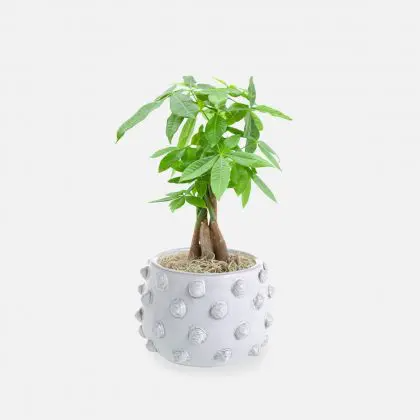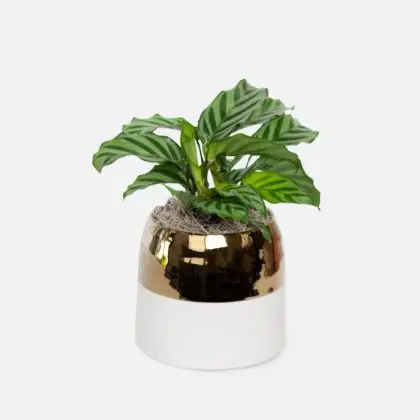Ponytail Palm (Beaucarnea Recurvata)
Available on backorder
Ponytail palm, scientifically known as Beaucarnea recurvata, is an interesting plant that is often mistaken for a palm due to its appearance but is actually a type of succulent.
Ponytail Palm Info:
- Botanical Classification: It belongs to the family Asparagaceae.
- Appearance: It has a distinctive swollen base, often referred to as an elephant’s foot, which serves as a water reservoir. The plant has a single stem that grows long, strap-shaped, recurved leaves that resemble a ponytail, hence the name.
- Growth: Outdoors, it can reach up to 8-10 meters in height, and its bulb-like trunk can grow to a diameter of up to 3 meters2. Indoors, it’s typically much smaller.
- Leaves: The glossy green leaves are about 2 cm wide and can grow up to 1.5 meters in length.
- Flowers: The Ponytail palm produces panicles of small white flowers once the plant is over 10 years old.
- Habitat: Originally from eastern Mexico, it now primarily exists in the state of Veracruz. It thrives in low deciduous forests with rocky soils deficient in nutrients.
- Cultivation: It is slow-growing, drought-tolerant, and hardy to 10°C.
Care Tips:
Soil: Use a fast-draining soil, such as a cacti and succulent potting mix. If you’re making your own mix, combine 1 part potting soil, 1 part perlite, and 1 part sand.
Light: Provide as much light as possible, preferably bright, indirect sunlight.
Watering: Keep the soil fairly dry. Water from spring through fall, allowing the top inch or two of soil to dry completely before re-watering. During the winter, water only occasionally.
Fertilizing: Fertilize in the spring with a cacti/succulent fertilizer.
This plant is known for its ease of care and its ability to tolerate neglect, making it a perfect choice for those who travel regularly or have very little time for plant maintenance. Its unique appearance with a bulb-like trunk and long, cascading leaves brings a touch of whimsy to any setting.
Cairo
Giza








